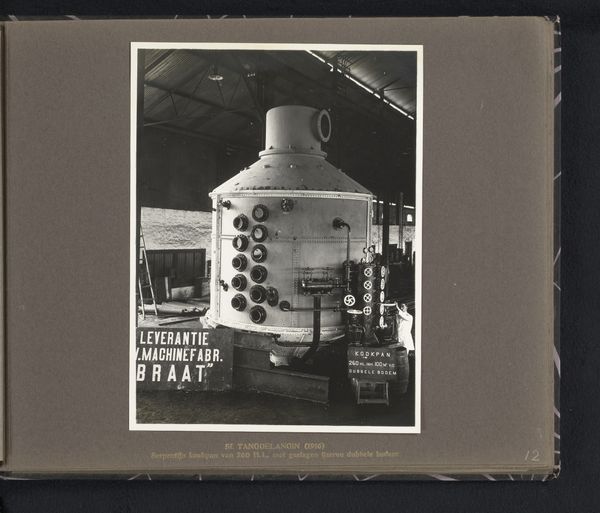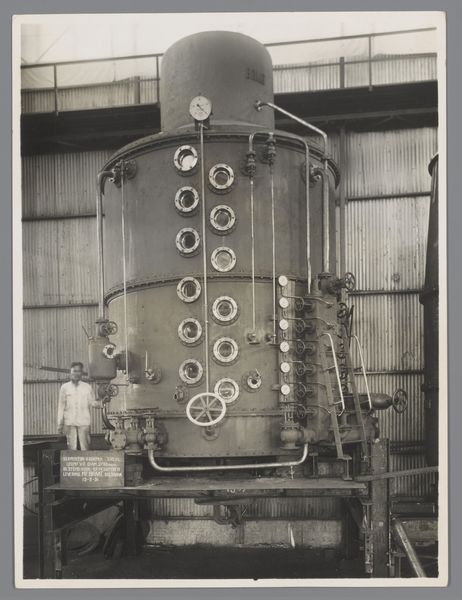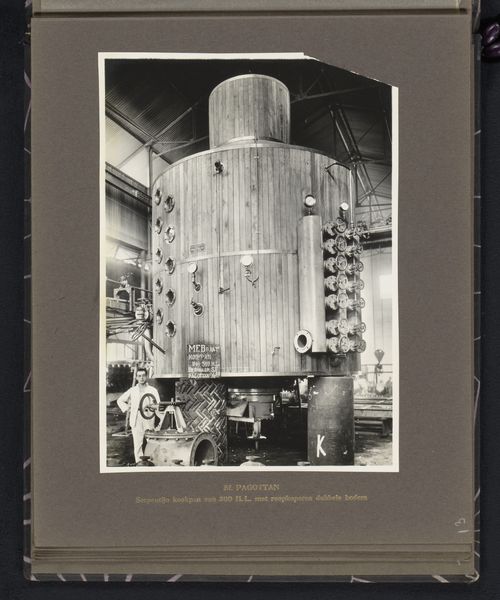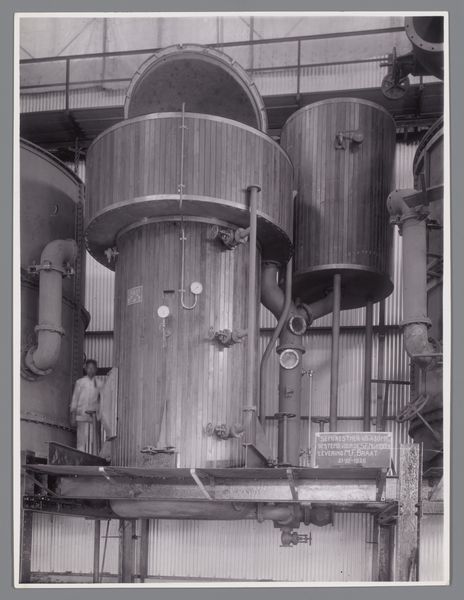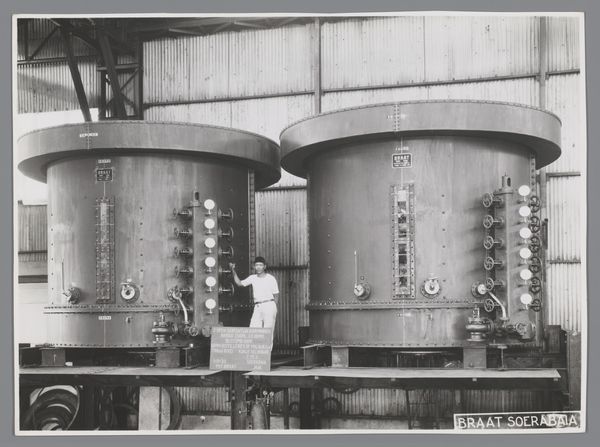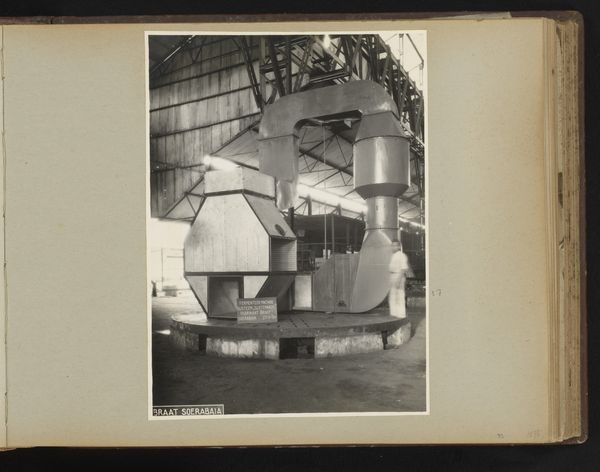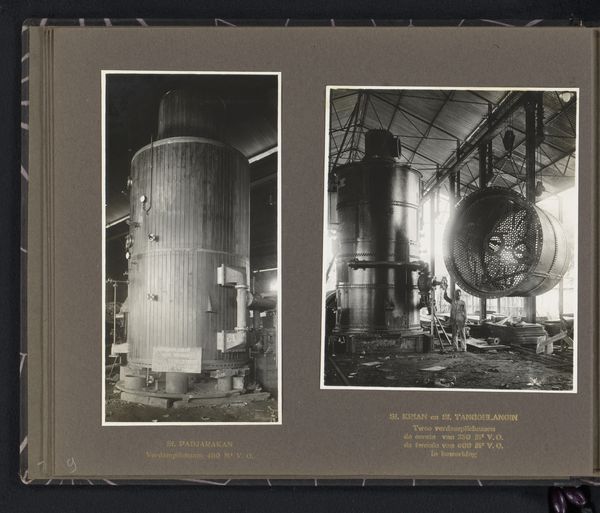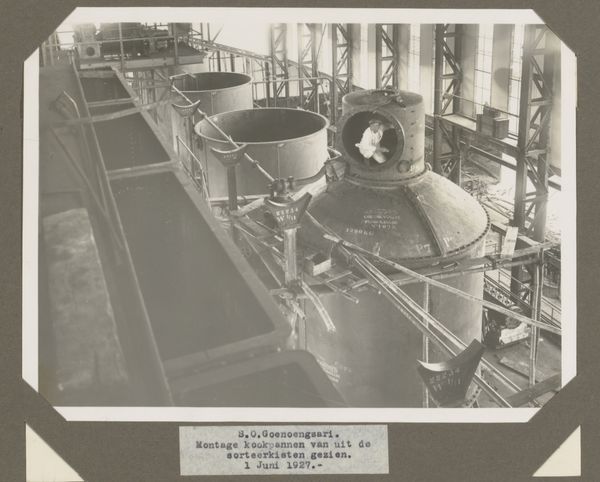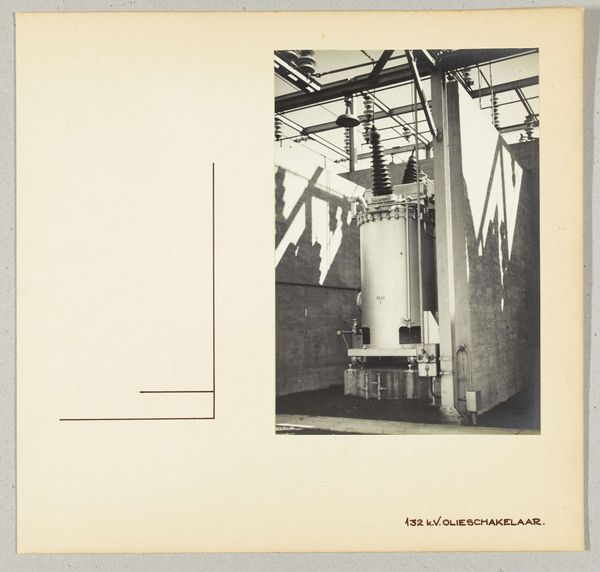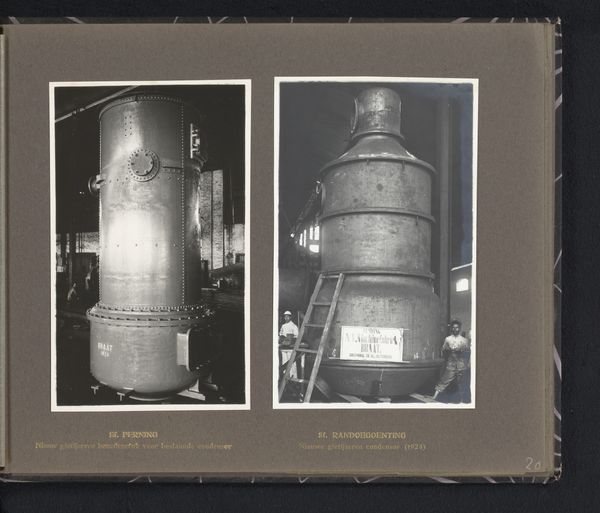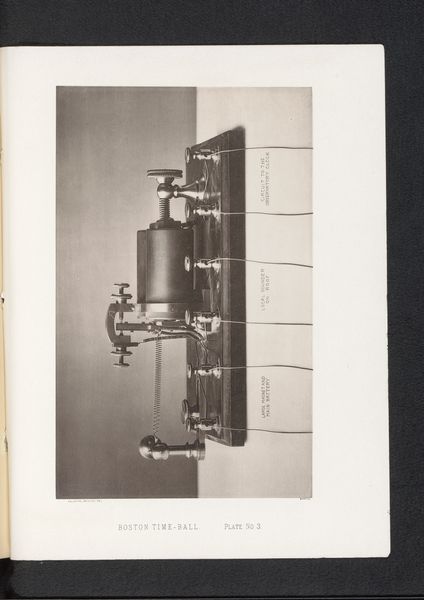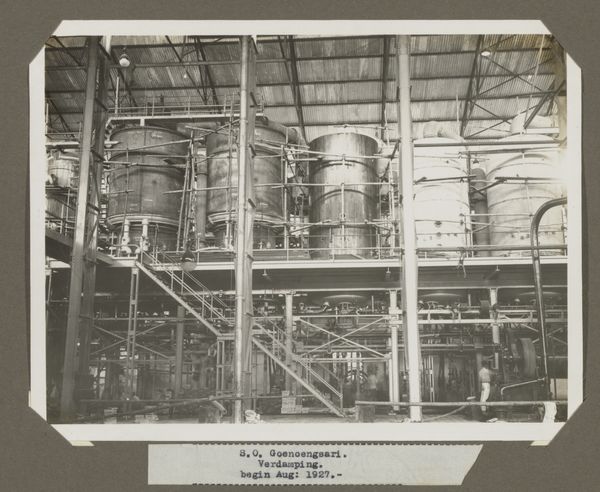
Sf. Pagottan Serpentijn kookpan van 300 H.L. met roodkoperen dubbele bodem, zonder houten bekleeding 1922
0:00
0:00
photography
#
still-life-photography
#
sculpture
#
photography
#
modernism
Dimensions: height 198 mm, width 159 mm, height 240 mm, width 290 mm
Copyright: Rijks Museum: Open Domain
Curator: This is a photograph, captured in 1922, now residing in the Rijksmuseum. The piece is titled "Sf. Pagottan Serpentijn kookpan van 300 H.L. met roodkoperen dubbele bodem, zonder houten bekleeding"—quite a mouthful! It translates to "Sf. Pagottan Serpentine cooking pan of 300 H.L. with red copper double bottom, without wooden covering." Editor: My immediate response is how stark it feels. The almost clinical detachment of the monochrome, the industrial subject matter... it’s strangely compelling. The sheer scale is also remarkable—it looms. Curator: Indeed. Consider the cultural context of early 20th-century industrial photography. It frequently portrayed technological advancement as progress, often overlooking the social implications. Editor: Absolutely. Looking through a feminist lens, the overt lack of human presence is striking. Where are the workers? Whose labor made this colossal object possible? And what was being 'cooked' inside? Understanding this requires intersectional narratives of class, industry, and gender. The photo presents the technology as if existing independent of human labor and context. Curator: Exactly. Furthermore, how do museums play into the perpetuation, or challenging, of that view? Do displays reinforce the machine as a powerful artifact, or do they uncover more critical views concerning, for instance, working conditions in that historical context? Editor: Right. Is this industrial subject depicted simply as functional efficiency or is it implicated in global structures of extraction and capital? Photography during the modernist era served very specific interests often detached from complex realities. This approach echoes, whether intentional or not, a particular relationship between technology and labor during its time. Curator: Well, looking closer does push us to think about that period’s emphasis on rationalization and functionalism. I do wonder about the public role of such images; it invites one to think further on these points. Editor: Definitely something to consider. It underlines the value of interrogating the social and political contexts that birthed artworks to allow more reflective interpretations. Curator: True, let’s hope we've offered a deeper understanding and stimulated thoughts, seeing a new perspective today!
Comments
No comments
Be the first to comment and join the conversation on the ultimate creative platform.
